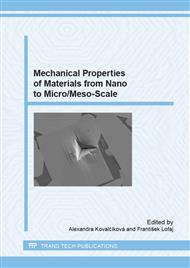p.189
p.193
p.197
p.201
p.205
p.209
p.213
p.217
p.221
Mechanical Joining of Various Materials by Clinching Method
Abstract:
Clinching is a simple, cheap and efficient method of joining that enables to join two or more sheets without any additional elements such as rivets, bolts or nuts. In addition, clinching does not require a surface preparation e.g. drilling (riveting), cleaning and roughening of the surface (adhesive boding) and other types of surface preparations (arc welding). Clinching is utilized in a wide range of applications and can be applied to different materials such as low carbon steel sheets, high-strength steel sheets, aluminium alloys, magnesium alloys. The paper presents the results of evaluation of clinched joint properties. The advanced high-strength steel sheet DP600 in combination with the drawing grade steel sheets DC06, DX51D+Z and high-strength low alloy steel sheet H220PD were used for experiments. The influence of position of the sheets relative to the punch and die of the tool on the carrying capacities of the clinched joints was observed as well. The tension test and microhardness test were used for the evaluation of clinched joint properties.
Info:
Periodical:
Pages:
205-208
Citation:
Online since:
September 2015
Authors:
Keywords:
Price:
Сopyright:
© 2015 Trans Tech Publications Ltd. All Rights Reserved
Share:
Citation:


